Oldtimers picture gallery. Trucks. Studebaker US6, US6x4.
REO co-produced U3 modification in 1944-1945.
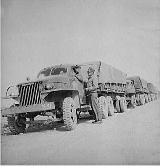
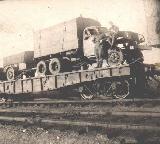 Studebaker US6-62, US6-48, US6x4-62, US6x4-48
Studebaker US6-62, US6-48, US6x4-62, US6x4-48
(data for US6x6 U3 if no modification mentioned)
Years of production: VI 1941 - 10 VIII 1945, in USSR since 1942
6x6 or 6x4 2,5-ton military truck
Overall production:
105917 of 6x6 and 87742 of 6x4 + 22204 REO 6x6
(reportedly some 152000 of US6 shipped to USSR).
Studebaker factory production: 193659 (197678 and 195535 by another sourses).
Factory model row of Studebaker-US6 consists of 13 modifications from U1 to U13. U6 - U8 were 6x4, the rest - 6x6:
U1 - 6x6, wheelbase - 3760mm, 1941, 425 built,
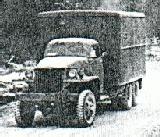
 U2 - 6x6, wheelbase - 3760mm, with winch, 1941, 779 built,
U2 - 6x6, wheelbase - 3760mm, with winch, 1941, 779 built,
U3 - 6x6, wheelbase - 4120mm, 1941-1945, 81535 built + 22204 of
REO in 1944-1945,
U4 - 6x6, wheelbase - 4120mm, with winch, 1941-1945, 18779 built,
U5 - 6x6, wheelbase - 4120mm, 2839 L (750 Gal.) tank without
winch, 1941-42, 500 built + 1425 (with winch?) (in 1945),
U6 - 6x4, wheelbase - 3760mm, semitractor without winch, with
Edwards-D11V 6,5-ton semitrailer, 1942-1945, 8640 built,
U7 - 6x4, wheelbase - 4120mm, 1942-1945, 66998 built,

 U8 - 6x4, wheelbase - 4120mm, with winch, 1942-1945, 12104 built,
U8 - 6x4, wheelbase - 4120mm, with winch, 1942-1945, 12104 built,
U9 - 6x6, wheelbase - 4120mm, chassis only, without winch,
1942-1943, 1699 built + 375 (with winch?) (in 1945),
U10 - 6x6, wheelbase - 3760mm, rear-dump-truck, 1943, 300 built
(U10 + U12),
U11 - 6x6, wheelbase - 3760mm, rear-dump-truck with winch, 1943,
100 built (U11 + U13),
U12 - 6x6, wheelbase - 3760mm, sidewards-unloading dump-truck, 1943, 300 built (U10 + U12),
U13 - 6x6, wheelbase - 3760mm, sidewards-unloading dump-truck with winch, 1943, 100 built (U11 + U13), 25k image.

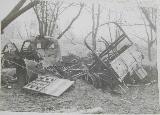 Dimensions:
Dimensions:
U1: length: ? in.; width: 88 in.; height: 87 in. (cab), 1061/16 in. (tent);
wheelbase - 148 in.
U2: length: ? in.; width: 88 in.; height: 87 in. (cab), 1061/16 in. (tent);
wheelbase - 148 in.
U3: length: 2505/8 in.; width: 88 in.; height: 87 in. (cab), 1061/16 in.
(tent); wheelbase - 162 in.
U4: length: 2653/8 in.; width: 88 in.; height: 87 in. (cab), 1061/16 in. (tent); wheelbase - 162 in.
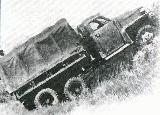
 U5 (1941-42): length: 2505/8 in.; width: ? in.; height: 87 in. (cab), ? in.
U5 (1941-42): length: 2505/8 in.; width: ? in.; height: 87 in. (cab), ? in.
(tank); wheelbase - 162 in.
U6: length: 2127/8 in.; width: 863/4 in.; height: 86 in. (cab); wheelbase -
148 in.
U7: length: 2505/8 in.; width: 88 in.; height: 86 in. (cab), 1061/16 in.
(tent); wheelbase - 162 in.
U8: length: 2653/8 in.; width: 88 in.; height: 86 in. (cab), 1061/16 in. (tent); wheelbase - 162 in.
U10: length: 225 in.; width: 88 in.; height: 87 in. (cab), 913/8 in. (dump body shield); wheelbase - 148 in.
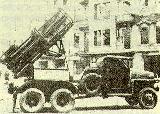
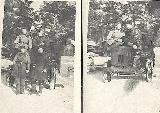 U11: length: 2399/16 in.; width: 88 in.; height: 87 in. (cab), 913/8 in.
U11: length: 2399/16 in.; width: 88 in.; height: 87 in. (cab), 913/8 in.
(dump body shield); wheelbase - 148 in.
U12: length: 225 in.; width: 88 in.; height: 87 in. (cab), 913/8 in. (dump
body shield); wheelbase - 148 in.
U13: length: 2399/16 in.; width: 88 in.; height: 87 in. (cab), 913/8 in.
(dump body shield); wheelbase - 148 in.
Road clearance: 10 in. (250mm front axle (6x6), 248mm rear axles)
Wheelbases: 4120mm (US6-62) and 3760mm (US6-48)
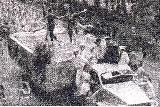
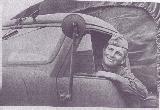 44 in. between rear axles
44 in. between rear axles
Front wheel tracks:
6x6 (center to center) - 621/4 in.
6x4 (conventional type brake drum) - 667/8 in.
6x4 (demountable type brake drum) - 621/4 in.
Rear track: 673/4 in.
Approach angles:
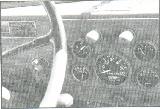
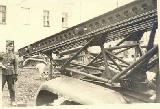 6x6 with winch - 33o
6x6 with winch - 33o
6x6 without winch - 551/2o
6x4 with winch - 30o
6x4 without winch - 52o
Departure angle (cargo and dumptrucks): 44o
Turning radius: 35 ft (U6-62); 32 ft (U6-48) (1 ft = 30,48 cm)
Weights (empty/loaded), 1 lb = 0,4536 kg:

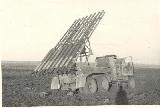 U1: ? / ?
U1: ? / ?
U2: ? / ?
U3: 9.875 lb / 15.485 lb
U4: 10.485 lb / 16.095 lb
U5: ? / ?
U6: 8.190 lb (tractor only) / 30.000 lb (with semi-trailer)
U7: 9.555 lb / 19.615 lb
U8: 10.165 lb / 20.225 lb
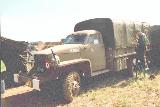
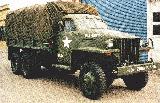 U9: ? / ?
U9: ? / ?
U10: 10.150 lb / 15.150 lb (off-road), 20.150 lb (highway)
U11: 10.760 lb / 15.760 lb (off-road), 20.760 lb (highway)
U12: 10.150 lb / 15.150 lb (off-road), 20.150 lb (highway)
U13: 10.760 lb / 15.760 lb (off-road), 20.760 lb (highway)
U3 front axle load: empty - 1800kg, loaded - 2050 kg
U3 rear axles load: empty - 3050kg, loaded - 5300 kg
Towing pintle height: 31 in.
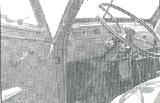
 Engine: Hercules JXD: 94hp/2500rpm, watercooled 4-stroke 6-cyl.
Engine: Hercules JXD: 94hp/2500rpm, watercooled 4-stroke 6-cyl.
SV, 5240cc (320 cu. in.)
Bore/Stroke: 101,6/107,95 mm ( 4" // 41/4")
Aluminium alloy pistons
Warm clearance between valve and pushrod:
0,15 ... 0,18 mm (both intake and exhaust)
Cylinder firing order: 1-5-3-6-2-4

 Water pump cooling, with termostat
Water pump cooling, with termostat
Carburetter (one of two types): Carter BBR-1, downdraft flow
Clutch: dry single plate
Gearbox: (5 forward, 1 back) x 2-speed transfer box with front axle
declutch
Ratios: I - 6,06; II - 3,50; III - 1,80; IV - 1; V - 0,799; rear - 6,00
Transfer box ratios: fast - 1,155; slow - 2,602

 Axle ratio: 6,6 : 1
Axle ratio: 6,6 : 1
Hydraulic brakes on all wheels with vacuum servo
Hand brakes: mechanical, on cardan shaft of middle axle
Semielliptic leaf springs, inverted at rear
6 Volt electrics, 153 A*h battery capacity
5-ton winch (if fitted)
Maximal speed (1 mph = 1,609 km/h):

 Maximal speeds allowable without front wheels driving (U1 ... U13),
Maximal speeds allowable without front wheels driving (U1 ... U13),
transfer case in high:
1st gear - 6 mph
2nd gear - 10,5 mph
3rd gear - 20 mph
4th gear (direct) - 36 mph
5th gear (overdrive) - 45 mph

 Maximal speeds allowable with front wheels driving (6x6 models),
Maximal speeds allowable with front wheels driving (6x6 models),
transfer case in low:
1st gear - 2,5 mph
2nd gear - 4,5 mph
3rd gear - 9 mph
4th gear (direct) - 16 mph
5th gear (overdrive) - 20 mph

 Maximal speeds allowable with transfer case in low (6x4 models
Maximal speeds allowable with transfer case in low (6x4 models
having shift lever):
1st gear - 3,7 mph
2nd gear - 6,4 mph
3rd gear - 12,5 mph
4th gear (direct) - 22,5 mph
5th gear (overdrive) - 28,1 mph

 Tyres: 7,50x20 inches (usually - offroad, but not ever)
Tyres: 7,50x20 inches (usually - offroad, but not ever)
Fuel tank capacity: 40 gallon (1 gallon = 3,785 Ltr.)
Petrol consumption:
38,5 Ltr./100km (6x6, 6x4), 50,0 Ltr./100km (6x4 tractor)
Petrol octane rating: 70 or 72
Table of US6 (6x6) production by month:
Year January February March April May June July August September October November December
1941: 137 258 106 319 1446 1256 1202
1942: 2016 295 2002 1600 2855 3092 1015 1438 1091 3520 1496 1632
1943: 1444 2641 2247 2808 2813 3223 3172 2980 2255 2502 358 2662
1944: 2334 2527 2704 2083 2415 2470 2312 2557 2271 2398 2300 2408
1945: 2601 2500 2900 2610 2808 3490 2530 1466
Table of US6x4 production by month:
Year January February March April May June July August September October November December
1942: 183 2076 2155 1990 1184 1253 3584 2489 3180 0 2000 1932
1943: 2076 879 1766 1592 1235 500 1499 1600 2222 1876 0 1936
1944: 2891 2898 3101 2909 2915 2886 2550 3033 2555 2939 2692 1310
1945: 2875 2526 3134 2495 2215 1840 1999


Very early US6 trucks carried "Studebaker" nameplate on the grill.
Late models have windshield mounted windshield wipers while earlier trucks have cab mounted wipers.
From mid-December 1942 through early March 1943 (and only in this time) all Studebakers rolled from
the production line had soft ("African") cab. Only 4902 U3 and 5104 U7 trucks had soft-top cabs,
all of them have been shipped to the Soviet Union. Serial numbers of these soft-top Studebaker US6
were: US6-25957 ... US6-30858 and US6x4-20171 ... US6x4-25274.
 Platform is either metal or wooden, with boards transformable to side benches.
Platform is either metal or wooden, with boards transformable to side benches.
Among the USSR modifications were rocket launchers: 1943 BM-13N ("Katyusha"), BM-13SN with spiral guides (132mm calibre), 1942 6x4 BM-8-48 (82mm calibre), 1944 6x4 BM-31-12 ("Andryusha", 300mm calibre), crane AK-1, 1942 6x6 pontoon-bridge truck N2P-41, 1943 6x4 3200 L tank-truck BZ-35S, American SCR radiostation with engine in trailer (photo from archive of Yuri Ivanovich Koryakin, this is his truck in WW2, photo sent by Artem V. Drabkin, visit his site Memoirs of Great Patriotic War veterans).
Studebaker US6 has two brothers with almost the same birthday - GMC CCKW-353 and International M-5-6. When Military Department of USA decided to standardize their automobile park, they took a decision: GMC supplies Army, International is for Navy and there was no client for Studebaker in USA, so they have been appointed for Red Army and other allied forces. Of course it was only common rule, and exclusions were wide spread, but this explains why Studebaker became main lend-lease truck for us here in USSR.
In 1944 REO plant was involved in US6x6 U3 production, but REOs weren't too numerous. Serial numbers of REO US6 trucks go from US6-R200001 and on (US6-R204001 is known).
All lend-lease goods got into Soviet Union by two ways. The first way was by heroic polar convoys through North seas to Murmansk and Arhangelsk ports, from where goods were transported by railway. Some automobiles were shipped disassembled in containers, and Moscow ZIS specialized in Studebakers assembling in parallel with domestic models truck production. The second way (III 1942 - 1945) laid through Iranian ports. I didn't find the data where Studebaker US6 were assebled, known factories were in Horremshehr, Bushir, Rafadije, Andimeshk and Shuaibe (Iraq). 184000 automobiles arrived to USSR by this way. Iranians assembled the trucks, loaded them with goods and drove them through Iran and Caucasus to Vladikavkaz (in 1944 renamed to Dzaudjikau), where the base of imported mashinery was placed.
Soviet drivers soon called Studebaker "King of roads". Of course, Studebaker demanded more service attention and good fuel, but, in comparison with our GAZ-AA and ZIS-5, it was truck of even not 2nd, but may be 3rd generation. For Soviet people Studebaker became legendary truck of WWII, even more honourable than Willys.
Frankly saying, I was surprised by results of my statistic investigations - only 5.6% of Studebakers and about 16% of lend-leased trucks - too little! I see few reasons for this:
1. My statistics takes into account only vehicles with civilian registration (more than 90 - 95% of automobiles), but Studebakers normally had military registration.
2. Automobiles - like many soldiers and officers - weren't demobilized immediately after the war end. Many remained in Germany up to the end of 1940's and later (in Soviet Army group in Germany).
(3). I don't take into account battle losses because percentage of domestic models losses (especially huge on the 1st phase of war) is undoubtly higher.
4. Some of foreign goods was payd off with the Soviet gold reserv, but very many had to be returned back after the war. My father described me the procedure he witnessed. American ship with tremendous press machine arrived into Soviet Far East. Americans, accompanied by Soviet officials, gathered every lend-lease automobiles they were able to find (many of these vehicles had been sent and participated the war against Japan in August 1945). American ship, laden with trucks went off-shore, crushed the load and dumped it onto the Pacific bottom. They returned and returned. One can imagine, they found not everything, it's easy to understand that many Soviet directors tried to hide good lend-lease vehicles and often succeed in this. Yes, we are grateful to americans for their cars and other goods, american tinned meat saved thousands from hunger and got the joke name "2nd front" (because every summer our people expected 2nd front in Europe, but it was opened only in 1944, cunning Churchill awaited when russians and germans will be exhausted; don't be angry with me, I didn't forget war in Africa and on the Pacific, but even many americans and UK people supposed then that 2nd front in Europe was more important). By the way, tin of meat was the most interesting exhibit for me in the Washington Smitsonian Museum of American History. But the fact of truck crushing occured also.
Photos and data are from:
Archive of Anatolii Lev (Moscow).
Gary Cameron (BO), Topeka, Kansas, USA.
Alain Dupouy (Grenoble, France), editor of very interesting series of books on USSR vehicle history.
Militär Fordons Historiska Föreningen, Sweden.
Lev Shugurov, automobile historian and journalist, Moscow.
Liucijus Suslavičius (Vilnius), automobile historian and author of numerous publications.
Leonid Gogolev, automobile historian (Kiev).
Bob McCarrel (Marion, Indiana, USA).
Marie and Roger Roy (Perth, Australia). Roger is owner of one US6 truck.
Clell G. Ballard (Fairfield, Idaho, USA) and Richard Quinn (Mokena, Illinois, USA) kindly permitted their materials to be used here.
Archive of Yuri Ivanovich Koryakin, Studebaker US6 radiomobile driver in WW2.
Artem V. Drabkin, visit his site Memoirs of Great Patriotic War veterans.
David I. Goldovt Ryzhenkov.
"Turning Wheels", Studebaker Driver's Club magazine (III 1993), article by John Benter and Fred K. Fox.
"Turning Wheels", Studebaker Driver's Club magazine (I 1995), article by Fred K. Fox.
Asa E. Hall & Richard M. Langworth "The Studebaker Century. A National Heritage".
Bart Vanderveen's book "Historic Military Vehicles Directory", "After the Battle" publication, 1989.
John Henne (Shelburne, NH, USA).
Mark Soholt (some photos).
eBay Deutschland (some WW2 photos).
"Signal" magazine, Ukraine, USSR.
"Ogonjok" magazine, 1947, USSR.
Sergey B. Lucenko, Minsk.
Jan Szatan, Poland (Klasyczne Pojazdy Terenowe Panstw Socjalistycznych).
Reinhard Frank "Lastkraftwagen der Wehrmacht", PODZUN-PALLAS, 1992.
Studebaker National Archives.
Bryce Sunderlin Historical Collection.
Family album of Georgii Paljtov (thanks to Dmitrii K.!)
My special gratitude to the "Turning Wheels", Studebaker Driver's Club magazine, and to Linda and Fred K. Fox, editors of this excellent publication.
STUDEBAKER & REO US6 TRUCK HELP LINE! *PARTS - New, Used and re-manufactured. *RESTORATIONS and IMPROVEMENTS. *TECHNICAL LITERATURE and ADVICE. All enquiries welcome. Service world wide. US6 ENGINEERS (Melbourne, Australia) WW2 Military truck specialists. E mail: US6engineers@iprimus.com.au (Member: Victorian Military Vehicle Corps).
Entrance Gallery Trucks Studebaker REO Sale Links
Last updated 9 V 2003. Andrei Bogomolov. Contact Information.



 U2 - 6x6, wheelbase - 3760mm, with winch, 1941, 779 built,
U2 - 6x6, wheelbase - 3760mm, with winch, 1941, 779 built,
 U8 - 6x4, wheelbase - 4120mm, with winch, 1942-1945, 12104 built,
U8 - 6x4, wheelbase - 4120mm, with winch, 1942-1945, 12104 built,
 Dimensions:
Dimensions:
 U5 (1941-42): length: 2505/8 in.; width: ? in.; height: 87 in. (cab), ? in.
U5 (1941-42): length: 2505/8 in.; width: ? in.; height: 87 in. (cab), ? in.
 U11: length: 2399/16 in.; width: 88 in.; height: 87 in. (cab), 913/8 in.
U11: length: 2399/16 in.; width: 88 in.; height: 87 in. (cab), 913/8 in.
 44 in. between rear axles
44 in. between rear axles
 6x6 with winch - 33o
6x6 with winch - 33o
 U1: ? / ?
U1: ? / ?
 U9: ? / ?
U9: ? / ?
 Engine: Hercules JXD: 94hp/2500rpm, watercooled 4-stroke 6-cyl.
Engine: Hercules JXD: 94hp/2500rpm, watercooled 4-stroke 6-cyl.
 Water pump cooling, with termostat
Water pump cooling, with termostat
 Axle ratio: 6,6 : 1
Axle ratio: 6,6 : 1
 Maximal speeds allowable without front wheels driving (U1 ... U13),
Maximal speeds allowable without front wheels driving (U1 ... U13),
 Maximal speeds allowable with front wheels driving (6x6 models),
Maximal speeds allowable with front wheels driving (6x6 models),
 Maximal speeds allowable with transfer case in low (6x4 models
Maximal speeds allowable with transfer case in low (6x4 models
 Tyres: 7,50x20 inches (usually - offroad, but not ever)
Tyres: 7,50x20 inches (usually - offroad, but not ever)

 Platform is either metal or wooden, with boards transformable to side benches.
Platform is either metal or wooden, with boards transformable to side benches.